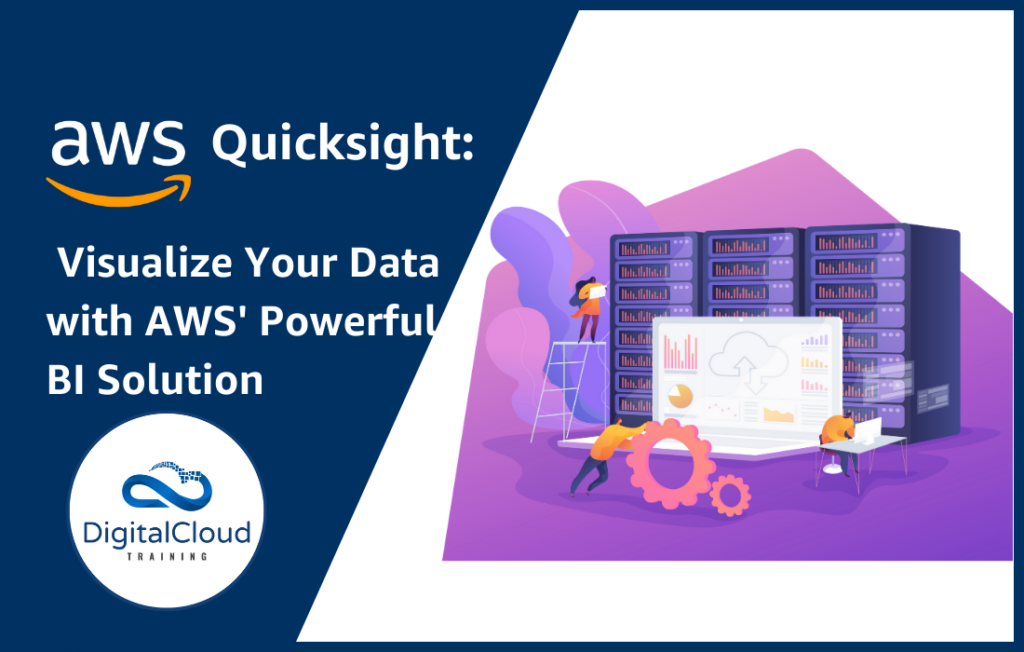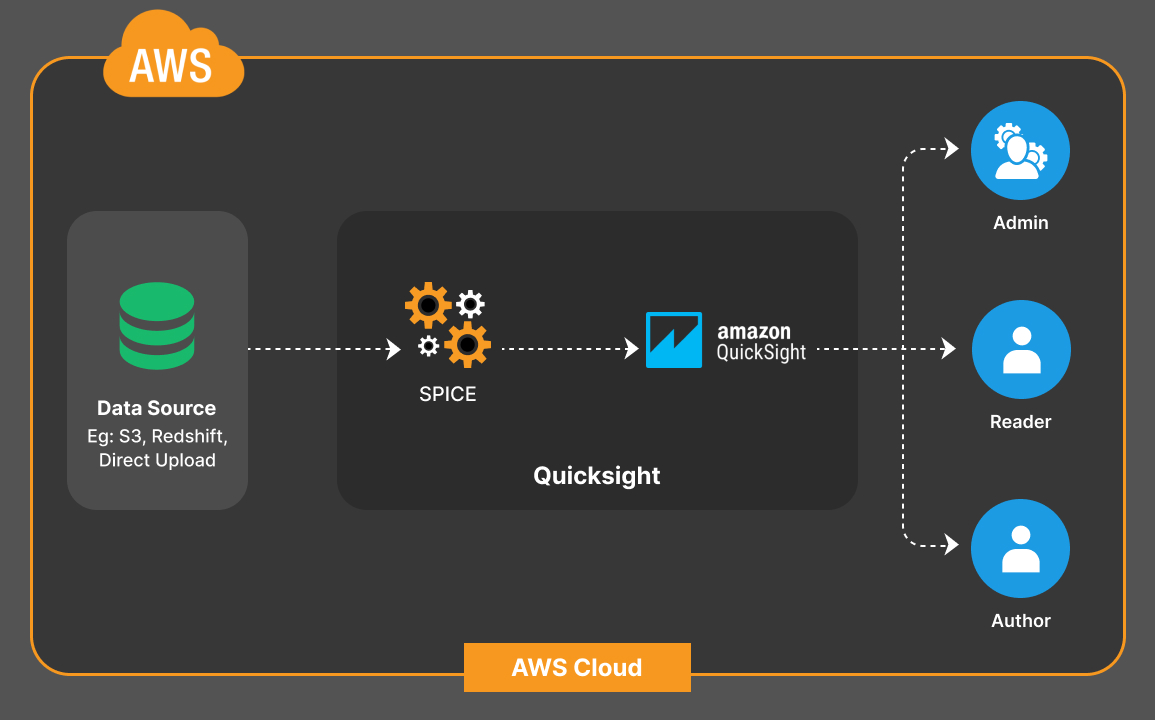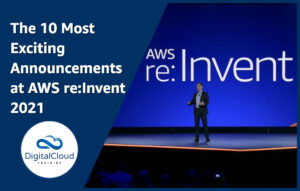Amazon Quicksight: Visualize Your Data with AWS’ Powerful BI Solution
Please use the menu below to navigate the article sections:

Business intelligence solutions frequently require teams of data engineers working for months to create complex data models. Making analytical decisions from data is an important and integral step to ensure the growth of businesses. In most organizations, data is stored across various sources, including databases, data lakes, and data warehouses. This fragmented data distribution makes it challenging to analyze and make informed decisions in a manner that is easily understandable, interactive, and visually appealing.
Amazon QuickSight is an excellent business intelligence tool that simplifies your work. With QuickSight, any employee can generate visualizations, perform ad-hoc analytics, and quickly gain valuable business insights from their data. In this article, we will delve into the details of Amazon QuickSight. We will explore its advantages, practical applications, pricing model, and why it should be your go-to solution for real-time analytics requirements.
What Is AWS Quicksight
Amazon Web Services (AWS) QuickSight is a cloud-based business intelligence solution that enables you to seamlessly integrate data from multiple sources. With its built-in scalability, QuickSight can accommodate a small number of users to tens of thousands without the need for any additional infrastructure deployment and management.
Amazon QuickSight allows you to create data visualizations and dashboards for better business decisions. Amazon QuickSight can gather data from a diverse range of sources, including Amazon Athena, Aurora, AWS Redshift, and more. In addition, Amazon QuickSight can access data from databases, file uploads, and API-based sources, such as Salesforce.
Amazon QuickSight’s BI platform analyzes the data using a blazingly fast, Parallel, In-memory Ccalculation Engine called SPICE. SPICE allows you to create charts by quickly using calculations. After preparing the data, Amazon QuickSight generates visualizations that you can order and customize according to your business needs. You do not need to perform manual extraction, transformation, and loading operations. QuickSight provides interactive graphs, tables, charts, stories, sheets, and many other types of visual components.
With QuickSight’s embedded analytics, users can view and author dashboards within the applications for their organization. Find below a quick illustration of how Quicksight works.

Use Cases for Quicksight
Below are some of the primary applications of Amazon QuickSight:
1: To quickly create insightful dashboards for your critical risk management programs
You can use AWS Quicksight to move from static spreadsheets to visually interactive data. Your analysts can create business-rich leading and lagging metrics in the form of charts, graphs and tables with minimal effort. Quicksight will provide you with valuable insights related to your risk management program (or any other programs).
2: Perform conversational AI on the data
You can use Quicksight to perform conversational machine learning on a data source and generate sentiment analysis reports. If you select twitter as your data source, you can generate reports on negative tweets and even evaluate the sentiments related to a particular phrase in tweets.
3: Rapid prototyping for generating visualizations
Using Quicksight, you can create different prototypes for exploring different visualization and analytics with the data.
4: Generate contacts and insights
If your company has contact center operations in order to support customer queries, you can use Quicksight to perform in-house analytics on the contact centre’s performance. You can see different insights generated by Quicksight, through which you will be able to optimize the performance of different call centres.
5: Generate forecasts for your business
If you are looking for a business intelligence tool that can analyze data and predict future demand, look no further than Amazon QuickSight. With Amazon QuickSight’s forecasts, you can effectively manage production schedules, reduce costs and waste, and enhance profitability. QuickSight also helps improve operational efficiency by uncovering areas for improvement and strengths through its powerful data analysis capabilities.
What Kind of Data Can You Use with Amazon Quicksight?
AWS Quicksight supports a lot of different formats. You can use files in AWS S3 buckets or on your on-premise network. It also supports:
- CSV
- TSV
- ELF
- CLF
- JSON – Flat or semistructured data files
- XLSX
- JSON
- SaaS data
If you have files in the S3 buckets, then they must be in a zip or gzip format for Quicksight to import them. For any other compression format, you will need to remove compression before importing them.
Advantages of Using an AWS Power BI
Amazon QuickSight boasts a variety of valuable features, including:
View real time/historical stats to make informed decisions
Quicksight allows you to see the aggregated data from different sources in a unified form. The data itself and its presentation are intuitive enough for making different business decisions. You can even customize your insights and reports too.
Allows you to segment data
Through Amazon Quicksight, you can connect to different data sources and combine data across these sources to create custom dashboards. For example, you can join transactional data from Amazon Redshift that contains customer IDs with Salesforce data that contain customer profile data to generate an interactive dashboard with order and customer details. You can slice and dice the transactional data by segment, geographic, or demographic without pulling the data and then aggregating it.
Intuitive interface
Amazon Quicksight contains powerful interactive visualizations. It has a built-in visualization tool that generates a string of suggestions by observing different patterns in the backend data sets. The SPICE engine has a powerful feature called ‘Auto Graph’, which evaluates the backend datasets and then suggests the best type of visualization.
No need to license software
It is pay as you go model, which means you do not need to buy any license to use it. Being a pure cloud-based managed service, you do not need to worry about infrastructure, scaling, fault tolerance, capacity provisioning, etc.
Built in Data Alerts
Proactive data alerts are essential for any business intelligence tool. Quicksight monitors your KPI’s and instantly generates alerts if a particular threshold is met. For example, it will alert you if your weekly sales drop or your daily order count is low. You can customize the alerts based on your needs.
AWS Quicksight Pricing
Here is a breakdown of the pricing and costs for Amazon QuickSight:
Price range for Amazon Quicksight
Amazon QuickSight is the first business intelligence cloud service that works with pay-per-session pricing. This makes it cost-effective in terms of large-scale deployments. Pay-per-session means you will have to pay only when the users access the dashboards or reports.
Following is high-level pricing for Quicksight.
AWS QuickSight has two editions to differentiate pricing:
- Standard edition
- Enterprise edition
Standard edition
This edition is intended for personal use i.e. personal data analysis and exploration. It is only available for authors or dashboard publishers at the cost of US$9/month with an annual subscription or US$12 for a monthly subscription.
Enterprise edition
This edition is for large-scale production use cases. It is available for authors, dashboard publishers, and readers. The pricing for readers is US$5/month for each user. However, the pricing in terms of the reader’s session capacity is US$250/month for every 500 sessions. In the case of an author, the cost is US$18/month with an annual subscription and US$24 for the monthly subscription.
Is Amazon QuickSight worth the investment?
Considering the benefits and use cases of QuickSight, it can be concluded that:
- QuickSight is an ideal choice for organizations that are already using AWS services, as it offers seamless integration with other AWS tools and aligns with AWS billing.
- QuickSight offers an affordable pricing option without sacrificing many of its capabilities. It is also a great option for organizations who want to test if it fits their needs before committing to licensing costs.
- QuickSight is relatively easy to set up, making it a good choice for organizations that want a BI tool that can be quickly put into use without a significant learning curve.
Conclusion
Today we dived deep into AWS Quicksight, AWS’s business intelligence solution. In the fast-paced world of business, companies are constantly seeking ways to gain an advantage over their competitors. Quicksight offers an exceptional solution, equipped with robust data visualization and business analytics capabilities. As with any AWS service, you can effortlessly give it a try and tailor it to meet your specific requirements.
Learn how to master the AWS Cloud
Check out our AWS training courses that will help you achieve AWS certifications and equip you with in-depth skills and knowledge.
- Membership – For unlimited access to our entire cloud training catalogue, get enrolled in our monthly/ annual membership program.
- Challenge Labs – Gain hands-on cloud skills in a secure sandbox environment. Learn, build, test, and fail forward without risking unexpected cloud bills.
- AWS Training – Our popular on-demand training courses will maximize your chances of securing your AWS certification on the first attempt.





Responses